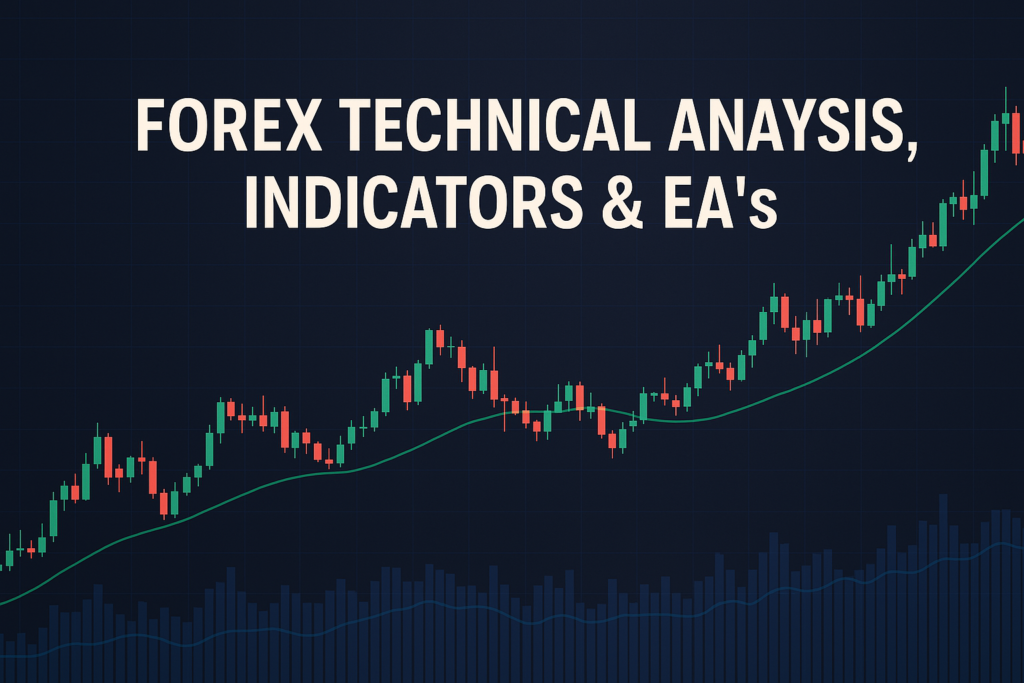
The parabolic SAR and moving average strategy is essential for traders seeking to navigate Forex markets effectively.
In the vast world of Forex trading, the parabolic SAR and moving average strategy stands out like a lighthouse guiding traders through turbulent waters. This strategy helps traders identify trends and make informed decisions, making it a valuable tool for both beginners and professionals. With the right understanding, it can be a game-changer in maximizing profits and minimizing losses.
However, many traders struggle with this strategy. They often find themselves confused by the indicators and unsure of how to implement them effectively. This confusion can lead to missed opportunities and financial losses. It’s crucial to grasp the concepts and applications of the parabolic SAR and moving average strategy to navigate the Forex market successfully.
This article will take you on a journey through the essentials of the parabolic SAR and moving average strategy. We’ll explore its workings, history, advantages, and disadvantages, and provide practical steps to apply it effectively in your trading endeavors.
The teknik parabolic sar is one of the key elements in this strategy that helps traders determine entry and exit points based on price movements.
What is a parabolic SAR and moving average strategy?
The parabolic SAR (Stop and Reverse) is an indicator that helps traders identify potential price reversals. It appears as dots above or below the price on a chart. When the dots are below the price, it signals a potential uptrend. When they are above, it indicates a possible downtrend. The moving average, on the other hand, smooths out price data over a specific period, making it easier to identify trends.
Types of parabolic SAR and moving average strategy
There are different types of moving averages that traders can use in conjunction with the parabolic SAR:
- Simple Moving Average (SMA): This is the most common type, calculating the average price over a set number of periods.
- Exponential Moving Average (EMA): This type gives more weight to recent prices, making it more responsive to new information.
- Weighted Moving Average (WMA): Similar to EMA, but it applies different weights to different prices, emphasizing certain periods more than others.
How parabolic SAR and moving average strategy smooth out price action
The parabolic SAR and moving average strategy work together to provide clear signals for traders. The moving average helps smooth out price fluctuations, making trends easier to spot. Meanwhile, the parabolic SAR gives specific entry and exit points based on those trends, allowing traders to make informed decisions.
Common periods used and why
Common periods for the moving average include 20, 50, and 200 days. Shorter periods, like 20, are better for capturing quick trends, while longer periods, like 200, help identify overall market direction. Understanding these periods can help traders choose the right settings for their trading style.
The History of parabolic SAR and moving average strategy: How It Became Popular
Origin of parabolic SAR and moving average strategy
The parabolic SAR was developed by J. Welles Wilder Jr. in the late 1970s. Wilder aimed to create a tool that could help traders identify trends and reversals effectively. The moving average, on the other hand, has been around for much longer, used in various forms since the early days of trading.
When did traders start using it widely?
Traders began widely adopting the parabolic SAR and moving average strategy in the 1980s and 1990s as technology improved. With the rise of computer trading systems, these indicators became easily accessible to traders worldwide, making them popular tools in Forex trading.
Real-life stories
Many professional traders have shared success stories about their use of the parabolic SAR and moving average strategy. For instance, one trader turned a small investment into a large profit by consistently applying the strategy across various currency pairs, showcasing its effectiveness in real-world scenarios.
Advantages and Disadvantages of parabolic SAR and moving average strategy
Advantages:
- Helps identify trends easily: The combination of the parabolic SAR and moving average makes it simple to spot upward or downward trends.
- Useful for dynamic support and resistance: The parabolic SAR can act as a support or resistance level, guiding traders on when to enter or exit trades.
- Works well for crossover strategies: When the moving average crosses the parabolic SAR, it can signal a potential trade opportunity.
Disadvantages:
- Lags behind price movements: The moving average can lag, meaning traders may miss out on crucial price movements.
- Can give false signals in sideways markets: In a ranging market, the parabolic SAR may provide misleading signals, leading to potential losses.
How to Apply parabolic SAR and moving average strategy on MT4 & MT5
Step-by-step guide to adding parabolic SAR and moving average strategy on charts
To apply the parabolic SAR and moving average strategy on MT4 or MT5, follow these simple steps:
- Open your trading platform and select the chart of the currency pair you want to analyze.
- Go to the “Insert” menu, select “Indicators,” and choose “Trend” to add the parabolic SAR.
- Repeat the process to add your chosen moving average type (SMA, EMA, WMA).
Customizing parabolic SAR and moving average strategy settings
You can customize the settings for both indicators to suit your trading style. Adjust the periods and colors to make them visually appealing and easy to read. Experiment with different settings to find what works best for you.
Saving templates for easy application
Once you have customized your indicators, save your chart as a template. This way, you can quickly apply the same settings to other charts without starting from scratch every time.
5 to 7 Trading Strategies Using Only parabolic SAR and moving average strategy
All Time Frame Strategy (M5 to D1)
This strategy works across different time frames, from M5 to D1. Traders look for the parabolic SAR to flip from above to below the price, signaling a potential buy. Conversely, when the dots switch from below to above, it indicates a sell opportunity.
Trending Strategy
Traders can use the parabolic SAR and moving average strategy to follow trends. When the price is above the moving average and the SAR is below, it’s a buy signal. If the price is below the moving average and the SAR is above, it’s a sell signal.
Counter Trade Strategy
This strategy involves trading against the trend. Traders look for situations where the parabolic SAR signals a reversal while the moving average indicates an established trend. This approach requires caution and precise execution.
Swing Trades Strategy
For swing traders, the parabolic SAR and moving average can help identify potential reversal points. When the price approaches a key support level and the SAR flips, it may be a good opportunity to enter a trade.
5 to 7 Trading Strategies Combining parabolic SAR and moving average strategy with Other Indicators
All Time Frame Strategy with RSI
Combining the parabolic SAR, moving average, and the Relative Strength Index (RSI) can enhance trading signals. For instance, if the SAR flips to a buy signal, and the RSI shows oversold conditions, it strengthens the buying opportunity.
Trending Strategy with MACD
In trending markets, using the Moving Average Convergence Divergence (MACD) alongside the parabolic SAR can provide confirmation. A bullish MACD cross with a SAR buy signal indicates a strong buying opportunity.
Counter Trade Strategy with Bollinger Bands
When using Bollinger Bands, if the price hits the upper band and the parabolic SAR flips to sell, it can signal a counter-trend trade. This strategy can be risky but rewarding if executed correctly.
Swing Trades Strategy with Stochastic Oscillator
The Stochastic Oscillator can help confirm entry points for swing trades. When the parabolic SAR signals a potential reversal, and the Stochastic shows overbought or oversold conditions, it can validate the trade.
For a deeper dive into AUDUSD analysis July 24, 2025, check out our latest insights.
Top 10 FAQs About parabolic SAR and moving average strategy
1. What is the purpose of the parabolic SAR?
The parabolic SAR helps traders identify potential price reversals and trends.
2. How do I choose the right moving average?
Choose based on your trading style; shorter for quick trades, longer for overall trends.
3. Can I use this strategy in any market?
Yes, the parabolic SAR and moving average strategy can be applied in various markets, including stocks and commodities.
4. How do I avoid false signals?
Use additional indicators, like the RSI or MACD, to confirm signals before trading.
5. Is this strategy suitable for beginners?
Yes, with practice, beginners can effectively use the parabolic SAR and moving average strategy.
6. What time frames work best?
This strategy works across all time frames, from M5 to D1, depending on your trading style.
7. Can I combine this strategy with others?
Absolutely! Combining with indicators like MACD or RSI can enhance your trading signals.
8. How often should I check my charts?
Check regularly, depending on your trading style. Day traders may check every few minutes, while swing traders may check daily.
9. Is backtesting important?
Yes, backtesting helps determine how well the strategy would have performed in the past.
10. Should I risk my money right away?
It’s wise to practice with a demo account before risking real money.
Conclusion
In summary, the parabolic SAR and moving average strategy can be a powerful tool in Forex trading. By understanding its workings, history, and applications, traders can make informed decisions and improve their trading success. Remember to test different strategies using demo accounts before applying them to real money trades.
With dedication and practice, you can master the parabolic SAR and moving average strategy, turning it into a valuable part of your trading toolkit.
Want to level up your trading skills? Check out trusted insights from Forex.com, Investopedia
Expand Your Knowledge
- 📌 Forex Trading Learning Road Map
- 📌 Forex Trading Course with no Fees
- 📌 Forex Trading Issues, Problems, and Solutions
- 📌 Forex Daily Forecast & Live Updates
- 📌 Forex Fundamental & News Analysis: Tomorrow’s Market Movers & Trade Opportunities
- 📌 Forex Education Hub: Learn & Profit
- 📌 Forex Technical Analysis, Indicators & EA’s
Start Trading Today
Ready to take your forex trading to the next level? Open an account with Exness, one of the most trusted platforms in the industry. 👉 Sign Up Now and trade with confidence!
My recommended broker stands out with ultra-low spreads for beginners, instant withdrawals, and zero spread accounts for pro traders.
Trusted since 2008, lightning-fast execution, no hidden fees, and a secure, transparent trading environment—giving you the edge you need to succeed. 🚀
YouTube Video Library: Related Videos
Note: The video above is embedded from YouTube and is the property of its original creator. We do not own or take responsibility for the content or opinions expressed in the video.



